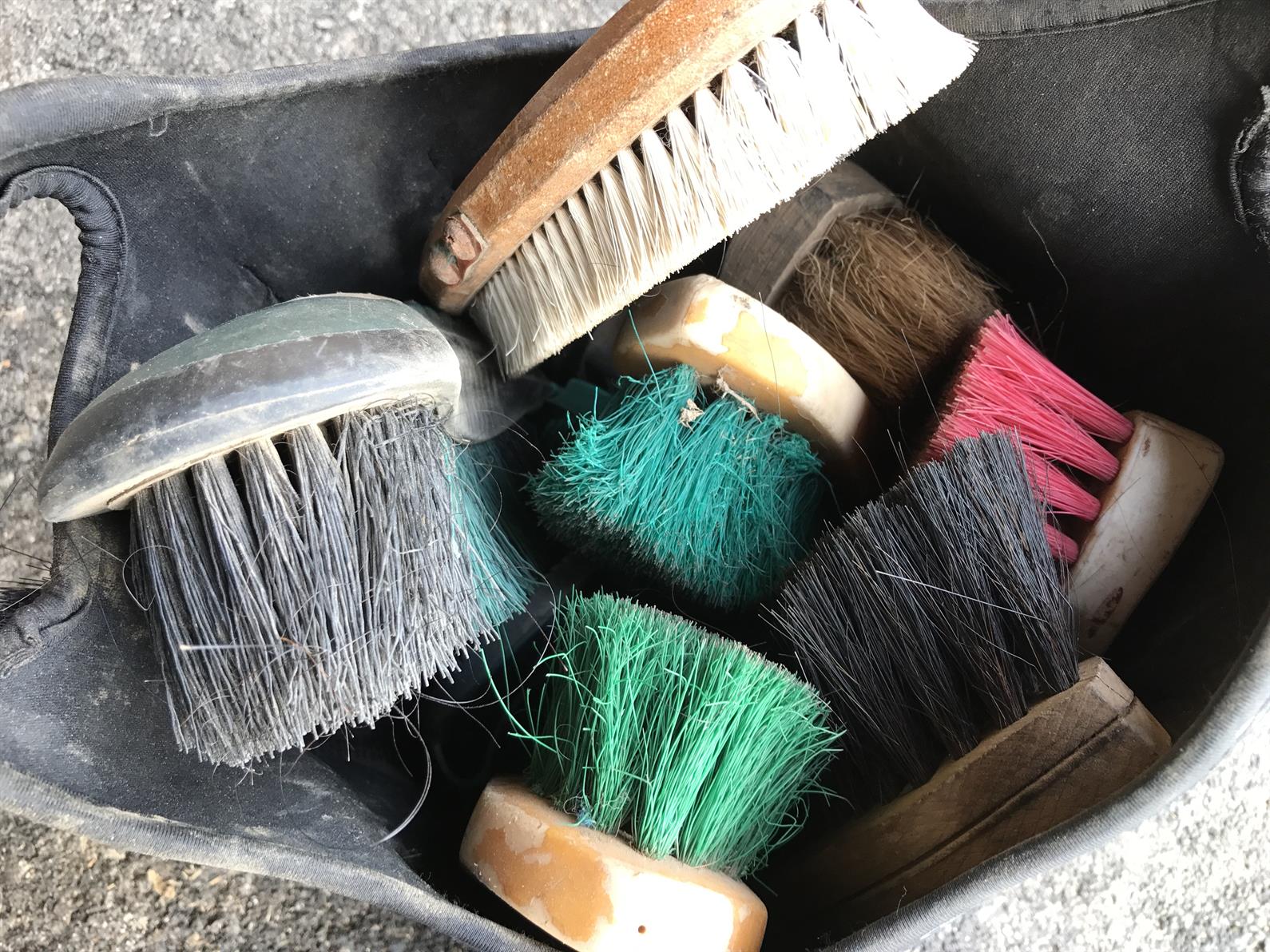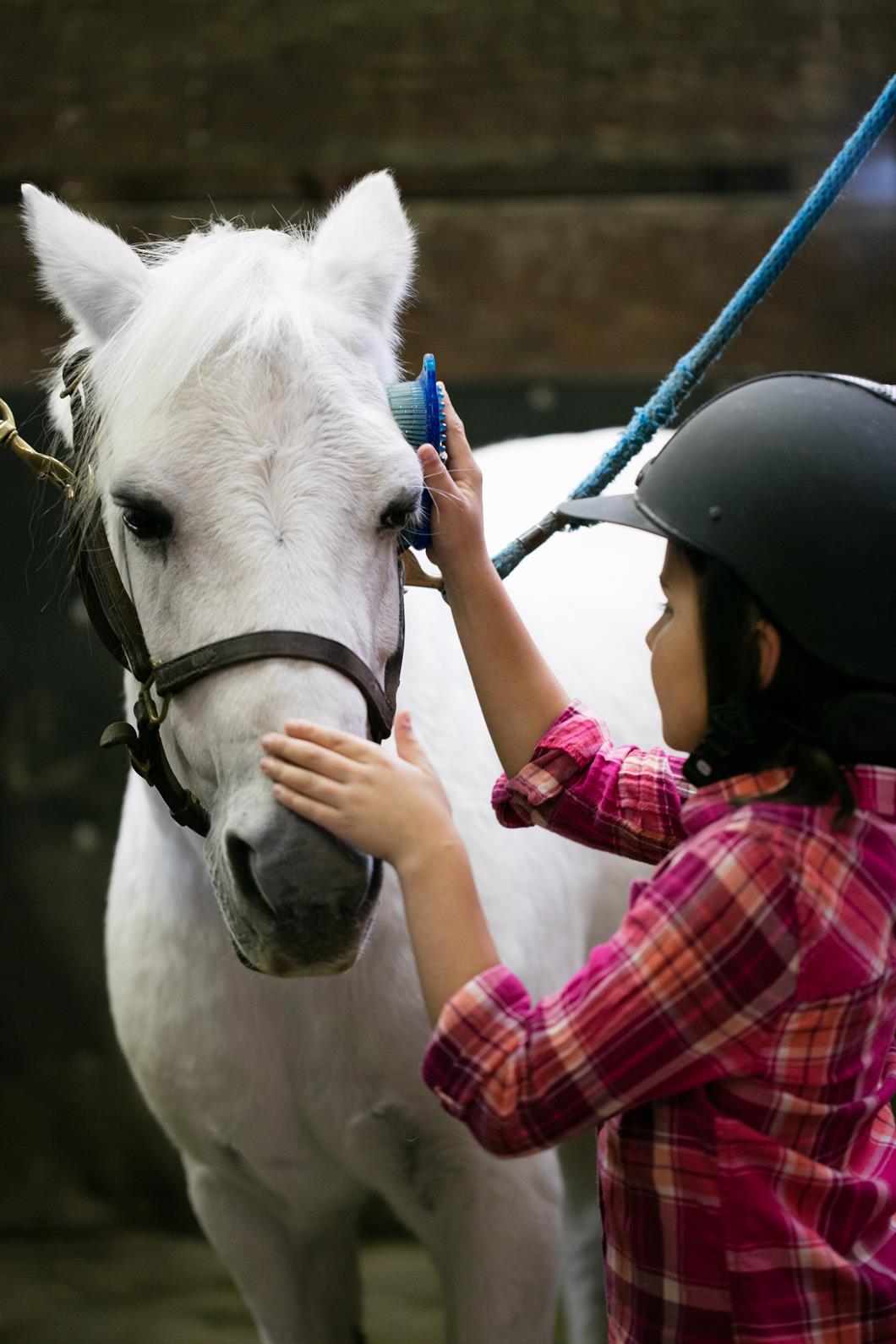It’s cheap and effective to make disinfecting part of your barn routine. We’ve got Hagyard Equine Medical Institute’s top tips.
Regular disinfecting around the barn can help prevent disease, so it’s worth making a good scrub part of your horsekeeping routine. But how often do brushes, buckets, and stalls need disinfecting? And what are the best disinfectants? We asked Dr. Nathan Slovis of Hagyard Equine Medical Institute for his advice. The good news: it’s cheap and effective to do. You only need common household cleaners and a little elbow grease.
Brushes
To help prevent skin problems like rain rot from spreading, each horse should have his own brushes, Slovis said, and brushes should be disinfected regularly. That applies to brushes with anti-bacterial-coatings, too.
“Don’t get a false sense of security with brushes that say they’re anti-bacterial,” Slovis cautioned. “It just means the organism might not stick to the brush, but they still need cleaning periodically.”

Tip: wash brushes with soap and water before disinfecting
This step clears out any organic debris the brushes might have collected.
“Use regular household soap and water, like Ivory soap or Dawn dishwashing liquid and water, and get the dirt and debris off before disinfecting,” Slovis advised.
What to use
“Bleach is one of the best disinfectants out there: it’s cheap, and it’s easy,” Slovis said. “Use eight ounces to the gallon of water. Most off-the-shelf disinfectants will do pretty well for disinfecting brushes.”
How often?
“I would do it each season—spring, summer, fall, and winter—because different diseases can be spread in those time periods,” said Slovis. “For example, you’ll see a lot of rain rot in the fall and winter, because horses often have heavier coats and are sweating or are turned out and can’t dry themselves off like they can with a short hair coat.”
Sunlight is your friend
Sunlight really does have disinfectant qualities, but they have limitations. Slovis suggests letting brushes dry in sunlight after you’ve cleaned them—but don’t expect sunlight alone to disinfect them.
“Sunlight is good, because a lot of bacteria can’t stand the ultraviolet rays, plus the dryness of the sun,” Slovis explained. “But to really help disinfect a surface, you’d need medical-grade ultraviolet light. And sunlight doesn’t work well on every type of bacteria. If you’re talking about clostridium spores, they can live out forever, because they’re in shells. But bacteria that has already sporulated [formed almost dormant forms of bacteria] and is in a vegetative state, those are easy to kill. So sun by itself is good, but it’s not a cure-all, because it can’t kill everything by itself.”
Water Buckets and Feed Tubs
What to use
“A lot of mold and algae can grow in water buckets, and bleach is usually the best and safest way to disinfect them,” said Slovis. “Wipe the bucket down, use a good scrub brush, and rinse it out. Sometimes you don’t even need a cleaner, just a nice scrub brush to get the debris off. You don’t have to use bleach every time.”
How often?
“Cleaning out water buckets should be a weekly occurrence,” Slovis advised.
Don’t forget pasture troughs
“Those can develop so much algae and debris, and those do need to be cleaned out,” he said. “Sometimes people will ask me if they should put a fish or snails in there, and I would not do that. There’s nothing better than elbow grease.”

Keep the birds away
The cleaning process for feed tubs is the same as for water buckets.
“The main thing is to keep the birds out of your feed buckets,” Slovis said. “Sometimes that’s not always easy, but if the horse goes out, empty the feed bucket to get rid of any leftover bits of food. Or you can put a flake of hay over the top of the feed bucket to act like a cover. That will help prevent the birds from getting in them, because if they do, they’ll defecate in there. They can carry disease easily from place to place.”
How often?
“Cleaning out water buckets and feed tubs should be a weekly occurrence,” Slovis advised.
Stalls
Decreasing the bioburden
“Ideally, any time you move in a new horse to a stall, you should disinfect the stall,” said Slovis. “If the same horse has been in that stall year after year, it doesn’t need much disinfecting, but I would recommend decreasing the bioburden.”
The bioburden is the amount of bacteria living on an unsterilized surface. Your best tools for reducing it? Detergent and muscle.
“Do a good scrub-down of the stall using a lot of elbow grease, with the detergent of your choice in a concentration that produces suds,” Slovis said. “You want to get the dust and organic debris off the stall. Manure, urine, blood—all of those organic materials can be food sources for bacteria that you don’t want around.”
How often?
“In an ideal world, you’d scrub down a stall in spring and again in fall,” said Slovis.
Want articles like this delivered to your inbox every week? Sign up to receive the Equestrian Weekly newsletter here.
This article is original content produced by US Equestrian and may only be shared via social media. It is not to be repurposed or used on any other website than USequestrian.org.
Photos: Glenye Oakford, Pretty Pixels Photography


